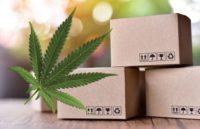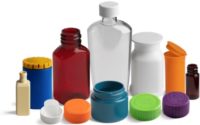The future of packaging is ripe for capitalization by the drivers of sustainability culture. With the battle lines drawn and forces at play in motion, change is now inevitable. The question arises: how quickly can the industry grow in the space of the next decade?
With an increasing number of nations banning non-biodegradable and petroleum-based plastics in certain uses, the choices at hand have naturally led to bioplastics. Bioplastics are a major ingredient of the renewable packaging industry. We derive them from various renewable agricultural crops, of which hemp is among the chief examples.
The Change for Hemp
The legal ramifications of the European Green Deal and the American Farm Bill of 2018 have created a microcosm where the sustainability discussion has turned into corporate initiatives for crops like industrial hemp, which are a source for bioplastics and numerous other products. The smaller carbon footprint of industrial hemp plays its role in shaping consumer demands towards a greener future.
Farmers are now able to cultivate the plant in the U.S., due to its removal from the list of controlled substances. Agribusinesses and manufacturers are aware of the plant’s versatility, with uses in packaging, building construction, clothing, medicinal oils, edibles like protein powder and hemp hearts, hemp paper and rope. What was once George Washington’s strong consideration as a cash crop for his estate, may gradually become the world’s cash crop of choice.
Hemp’s Sustainability Beckons
Why is the crop unanimously superior in the aspect of eco-friendliness? Its growing requirements are frugal: water, soil nutrients and pesticides are not needed in large quantities. It absorbs great quantities of carbon dioxide from the atmosphere, and uses it to create 65-75% cellulose content within its biomass. Cellulose is vital in the manufacture of bioplastics. Hemp is also flexible within crop cycles, due to its small harvesting period of only 4 months.
 Thus, farmers use it as a rotational crop, allowing them to also cultivate other crops after its harvest. High-quality crops like cotton, though superior in cellulose content and fibrous softness, require far more water quantities, soil nutrients and pesticides. Farmers face greater difficulties in cultivating cotton as a rotational crop, because it requires far more space and time.
Thus, farmers use it as a rotational crop, allowing them to also cultivate other crops after its harvest. High-quality crops like cotton, though superior in cellulose content and fibrous softness, require far more water quantities, soil nutrients and pesticides. Farmers face greater difficulties in cultivating cotton as a rotational crop, because it requires far more space and time.
Hemp Bioplastics For Packaging
We manufacture bioplastics from the hurd and cellulose of the hemp plant. Hemp bioplastics are biodegradable, and take up to a maximum of 6 months to completely decompose; by contrast, normal fossil-fuel-based plastic takes up to 1000 years to decompose.
Manufacturers incorporate these ingredients into existing manufacturing processes for regular plastics, such as injection molding. Thus, we can apply bioplastic ingredients to similar plastics applications, such as packaging, paneling, medical equipment and more. New technologies aren’t necessarily needed, so companies and manufacturers do not have any reservations about its viability as an industry.
Here are a few types of bioplastics derived from hemp:
-
Hemp Cellulose-based Bioplastics
This is a substance found in plant cell walls. We use cellulose to manufacture a broad range of unique plastics, including celluloid, rayon and cellophane. These plastics are usually entirely organic. We mix cellulose and its variations (such as nanocellulose, made from cellulose nanocrystals) with other ingredients, such as camphor, to produce thermoplastics and the like. Using natural polymer, we process a broad range of bioplastics and corresponding polymers. The difference in their chemical properties is down to the nature of the polymer chains and the extent of crystallization.
-
Composite Hemp-based Bioplastics
Composite plastics comprise organic polymers like hemp cellulose, as well as an addition of synthetic polymers. They also have reinforcement fibers to improve the strength of the bioplastic, which are also either organic or synthetic. Sometimes, we blend hemp cellulose with other organic polymers like shellac and tree resins. Inorganic fillers include fiberglass, talc and mica.
 We call any natural polymer, when blended with synthetic polymers, a “bio composite” plastic. We measure and calibrate these ingredients according to the desired stiffness, strength and density of the eventual plastic product. Apart from packaging, manufacturers use these bioplastics for furniture, car panels, building materials and biodegradable bags.
We call any natural polymer, when blended with synthetic polymers, a “bio composite” plastic. We measure and calibrate these ingredients according to the desired stiffness, strength and density of the eventual plastic product. Apart from packaging, manufacturers use these bioplastics for furniture, car panels, building materials and biodegradable bags.
A composite of polypropylene (PP), reinforced with natural hemp fibers, showed that hemp has a tensile strength akin to that of conventional fiberglass composites. Furthermore, malleated polypropylene (MAPP) composites, fortified with hemp fibers, significantly improved stress-enduring properties compared to conventional fiberglass composites.
-
Pure Organic Bioplastics With Hemp
We have already generated several bioplastics entirely from natural plant substances like hemp. Hemp fibers, when made alkaline with diluted sodium hydroxide in low concentrations, exhibit superior tensile strength. We have produced materials from polylactic acid (PLA) fortified with hemp fibers. These plastic materials showed superior strength than ones containing only PLA. For heavy-duty packaging, manufacturers use hemp fibers reinforced with biopolyhydroxybutyrate (BHP), which are sturdy enough.
 With the world in a state of major change due to the coronavirus outbreak of 2020, the focus is back on packaging and delivery. In this volatile area, perhaps the industry can learn a few new tricks, instead of suffocating itself in old traditions and superficial opportunism. The permutations and combinations of bioplastic technology can serve a swath of packaging applications. We must thoroughly explore this technology.
With the world in a state of major change due to the coronavirus outbreak of 2020, the focus is back on packaging and delivery. In this volatile area, perhaps the industry can learn a few new tricks, instead of suffocating itself in old traditions and superficial opportunism. The permutations and combinations of bioplastic technology can serve a swath of packaging applications. We must thoroughly explore this technology.
Hemp’s Future in Packaging
Fossil fuel-based plastic polymers are non-renewable, highly pollutive and dangerous to ecosystems, due to their lifespans. They are some of the most destructive inventions of man, but thankfully could be held back by this crop. Industrial hemp upheld countless industries through human history and now is making a comeback. After existing in relative obscurity in the U.S. due to false connotations with the psychoactive properties of its cousin, it is now back in business.
With the American hemp industry on the verge of a revolution, hemp packaging is primed to take over a significant part of the global packaging sector. The political, economic and environmental incentives for companies to adopt bioplastics are legion. Its lower cost lends to its allure as well. Consumers and agribusinesses are following suit, making the choice to be environmentally-conscious. By 2030, it is estimated that 40% of the plastics industry will be bioplastics.
We can only mitigate the plastic pollution in oceans, landfills and elsewhere, with the use of biodegradable bioplastics; otherwise, animals, humans and plants are getting adversely affected by imperceptible microplastics that pervade vast regions of the Earth. With hemp bioplastics, we use the cleaner, renewable matter of plants to conserve the planet’s sanctity. We can expect this new technology to continue to light the way for other nations, societies and companies to build upon this sustainable plan.




This message is for Author Vishal Vivek. Mr. Vivek, I would like to speak with you regarding how we can work together to bring hemp into the global marketplace and protect and reward the people doing the work. Please send me an email or text so we can arrange a time for a phone conversation. Thank you!
Duane Stjernholm
Co-Founder and Operator
Colorado Hemp Processing Cooperative
303-525-2611
Thanks Duane. Would love to connect. Sent you a connection request on LinkedIn as well.
Hello Vishal,
Very thoughtful article indeed. I am looking for making hemp products like food additives, medicinal CBD and packaging material as a replacement of non-biodegradable plastics. Can you please guide me to get raw materials and some process plants for such hemp raw materials?
Greetings Sir. I sm the cofounder of Tradewinds Hemp est 1990. We have allways featured biodegradable plant materials in our packaging as a proponent of full circle sustainability in all our work. We have projects and consulting relationships in the Us several other countries and Indigenous comunities, focused on sustainable development in agriculture and related manufacturing. We are always looking for new development partners and collaborative relationships with like minded forward looking groups and individuals. Thank you for all youre work. Please feel free to contact me.
Richard Kiyak-Boughton
Tradewinds Hemp
Green Goddess Organics
Tara Pharm
rickkb88@gmail.com
541-543-0624
Rick where are you based?
I am presently living in Malawi where I believe the cultivation of industrial hemp would be a game changer. I would like to think that much of the plant matter could be used for sustainable packaging or similar and need to engage with persons who may be able to assist.
Regards
Kate
Thank you! Please contact me.
Thank you very much for this great article! I would love to talk to you Mr. Vivek and ask you some questions as I am currently writting my Bachelor thesis ( at ZHAW Switzerland) about how hemp could be used for packaging material. It would be very helpful to get in contact with you (sent you a request on LinkedIn).
Kind regards
Dominik
Greetings Vishal. I am currently at the early stages of setting up large scale natural soap and cosmetic production in Gambia, in collaboration with Gambia Environmental Alliance. The objective is, among other aims, to obsolete imported plastic packaged – chemical laden commodities, which are at present an insidious threat to the environment ( as with all other countries ) where there is close to zero contingency or infrastructure to deal with the growing problem. We are currently at the R&D stage and among other things are seeking cost effective packaging solutions. We are aiming to make our products exportable and thus create industry and employment as well as garnering support from The Gambian Ministry etc. Ideally packaging would also be manufactured in The Gambia. I would be very grateful for you advice and direction.
Hi, Vishal,
We have a project we are working on and are currently employing consultants to work up our methodology the project is based on a circular economy model I would like to connect and discuss some Ideas that your article has Inspired, we see Africa as a truly magnificent opportunity to change things right now and sequestering carbon in the process.
Very informative read here. What I’m wondering is would it be possible to have large drums for use in manufacturing, that would hold a variety of different liquids. Has there been much investigation/ research done for this?
Would love to hear your thoughts.
Michellebrady47@hotmail.com
I would like to see a hemp based compostable baby diaper. If it were to compost naturally, it could be used as fertilizer. Currently pampers, huggees, etc. will be around long after the baby and his or her decedents have passed. These diapers are also very expensive. There is a huge market for baby diapers. With water shortages, washing cloth diapers is not a great option. I think hemp offers a great alternative to plastic based diapers.